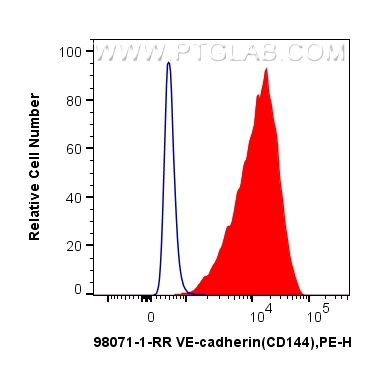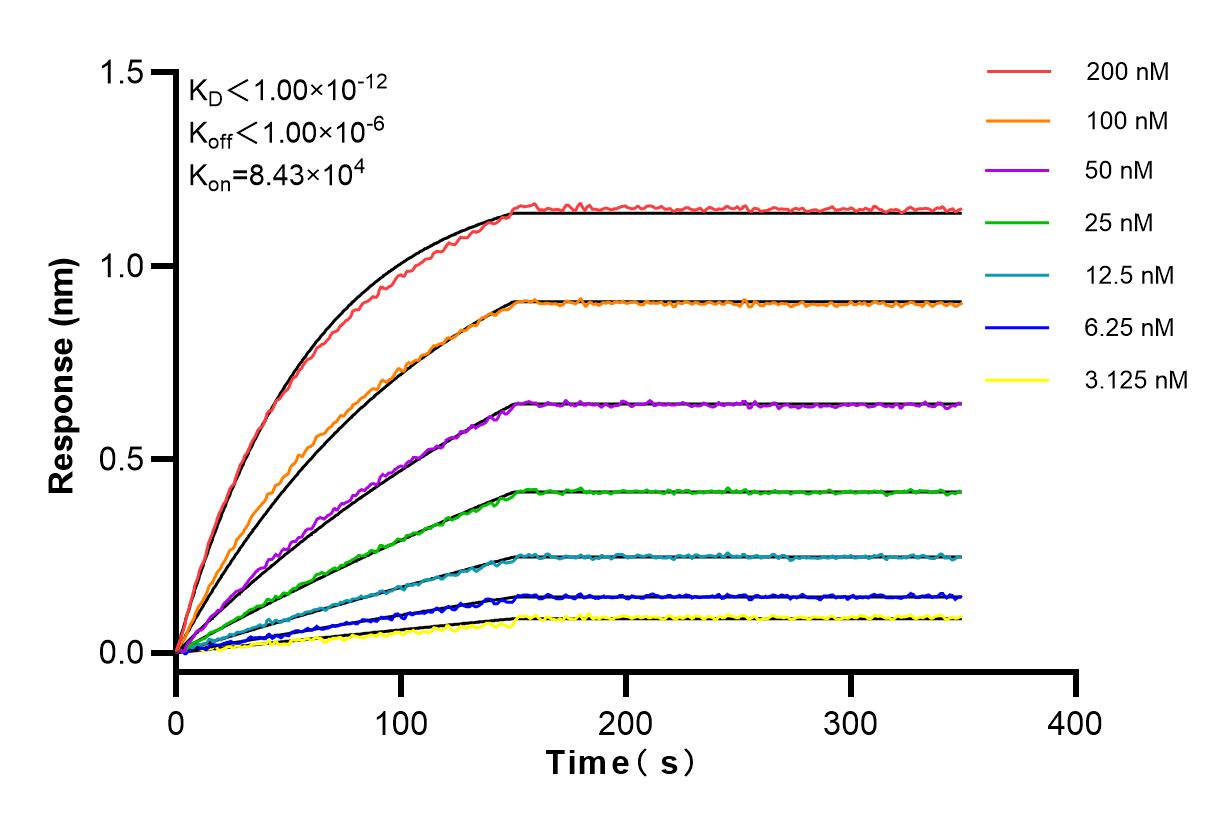验证数据展示
产品信息
98071-1-PBS targets VE-cadherin/CD144 in FC applications and shows reactivity with human samples.
| 经测试应用 | FC Application Description |
| 经测试反应性 | human |
| 免疫原 | Fusion Protein 种属同源性预测 |
| 宿主/亚型 | Rabbit / IgG |
| 抗体类别 | Recombinant |
| 产品类型 | Antibody |
| 全称 | cadherin 5, type 2 (vascular endothelium) |
| 别名 | VE-cadherin, CDH5, CD144, Cadherin 5, 7B4 antigen |
| 计算分子量 | 88 kDa |
| GenBank蛋白编号 | NM_001795.5 |
| 基因名称 | VE-cadherin |
| Gene ID (NCBI) | 1003 |
| 偶联类型 | Unconjugated |
| 形式 | Liquid |
| 纯化方式 | Protein A purfication |
| UNIPROT ID | P33151-1 |
| 储存缓冲液 | PBS only , pH 7.3 |
| 储存条件 | Store at -80°C. The product is shipped with ice packs. Upon receipt, store it immediately at -80°C |
背景介绍
Cadherins are a family of transmembrane glycoproteins that mediate calcium-dependent cell-cell adhesion and play an important role in the maintenance of normal tissue architecture. Vascular endothelial cadherin (VE-cadherin), also known as Cadherin-5 (CDH5) or CD144, is a member of the type II classical cadherin family of cell adhesion proteins (PMID: 21269602). VE-cadherin is expressed specifically in endothelial cells and mediates homophilic adhesion in the vascular endothelium (PMID: 1522121; 8555485; 21269602). VE-cadherin plays a role in the organization of lateral endothelial junctions and in the control of permeability properties of vascular endothelium (PMID: 1522121). VE-cadherin has also been shown to be required for angiogenesis (PMID: 16473763; 18162609). The calculated molecular weight of VE-cadherin is 88 kDa and the apparent molecular weight of 120-140 kDa is higher due to post-translational glycosylation and phosphorylation (PMID: 10460833; 29894844). Full-length VE-cadherin can be proteolytically cleaved to generate a fragment of 90-100 kDa (PMID: 9786462; 22064597).

